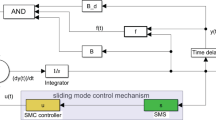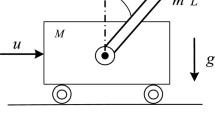Abstract
Recent extremum seeking control that uses a continuous perturbation and the integral feedback of perturbation- output product is based on a static nonlinear process. The method can be applied to dynamic nonlinear processes for tracking and maintaining the optimal operating points. It has several tuning parameters, such as the integral controller gain and the magnitude and frequency of the continuous perturbation signal. The frequency of the continuous perturbation signal should be low enough to ensure the time-scale separation between the real-time optimization and the process dynamics for the closed-loop stability. However, for some processes, fast perturbations are preferred because they can be attenuated easily in subsequent processes such as buffers and storages. For this, we propose an extremum seeking control method where the partial sum of perturbation-output product is used for a faster squarewave perturbation. Simulations for two processes of parallel competing reactions have been given, and a simple liquid level system to test extremum seeking control methods is suggested.
Similar content being viewed by others
References
D. E. Seborg, T. F. Edgar, D. A. Mellichamp and F. J. Doyle, Process dynamics and control, 3rd Ed., Wiley, New York, U. S. A. (2010).
S. Skogestad, J. Process Control, 10, 487 (2000).
C. Zhang and R. Ordonez, Automatica, 45, 634 (2009).
S. Z. Khong, D. Nesic, C. Manzie and Y. Tan, Automatica, 49, 1970 (2013).
K. S. Lee and W. K. Lee, AIChE J., 31, 667 (1985).
D. Nesic, A. Mohammadi and C. Manzie, IEEE Trans. Automatic Control, 58, 435 (2013).
S. K. Korovin and V. I. Utkin, Automatica, 10, 525 (1974).
L. Fu and U. Ozguner, Automatica, 47, 2595 (2011).
M. Krstic and H. H. Wang, Automatica, 36, 595 (2000).
Y. Tan, D. Nesic, I. M. Mareels and A. Astolfi, Automatica, 45, 245 (2009).
Y. Tan, W. H. Moase, C. Manzie, D. Nesic and I. M. Mareels, Proc. 29th Chinese Control Conference, July 29-31, Beijing, China (2010).
M. Krstic, Systems & Control Letters, 39, 313 (2000).
Y. Tan, D. Nesic and I. M. Mareels, Automatica, 44, 1446 (2008).
A. Scheinker and M. Krstic, Systems & Control Letters, 63, 25 (2014).
D. Dochain, M. Perrier and M. Guay, Mathematics and Computers in Simulation, 82, 369 (2011).
M. Guay, J. Process Control, 24, 98 (2014).
D. H. Kim, D. R. Park and J. Lee, Int. J. Hydrogen Energy, 38, 4429 (2013).
H. C. Lee, S. Kim, J. P. Heo, D. H. Kim and J. Lee, ADCHEM 2015, Whistler, Canada (2015).
J. Lee and T. F. Edgar, Korean J. Chem. Eng., 33, 416 (2016).
B. W. Bequette, Process dynamics modeling, analysis, and simulation, Prentice Hall, New Jersey, U. S. A. (1998).
J. Lee, D. H. Kim, D. R. Yang and W. Cho, AIChE Spring Meeting, Austin, Texas, U. S. A. (2015).
Author information
Authors and Affiliations
Corresponding author
Rights and permissions
About this article
Cite this article
Lee, J., Lee, K.S. Extremum seeking control using a partial sum of input-output product. Korean J. Chem. Eng. 33, 3079–3084 (2016). https://doi.org/10.1007/s11814-016-0223-2
Received:
Accepted:
Published:
Issue Date:
DOI: https://doi.org/10.1007/s11814-016-0223-2




